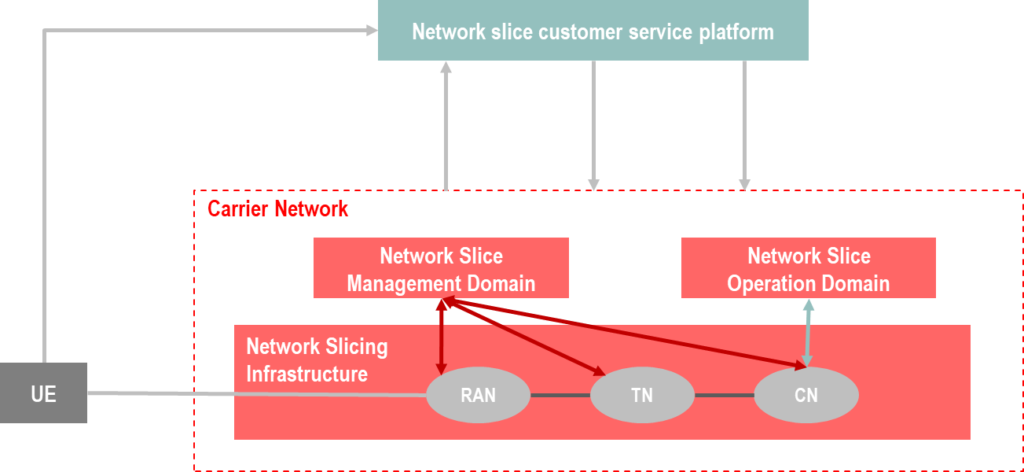A network slice is a logical network serving a defined business purpose or customer, consisting of all required network resources configured together. It is created, changed and removed by management functions. Hence network slicing divides an operator’s physical network into multiple logical networks. These logical networks would permit the implementation of tailor-made functionality and network operation specific to the needs of each slice customer, rather than a one-size-fits-all approach as witnessed in the current and previous mobile generations which would not be economically viable.

The network slicing system architecture consists of three parts: UE, network slice customer service platform and
carrier network. The latter includes network slicing infrastructure providing the necessary support for network slices in RAN, Transport Network (TN) and CN and implements assurance. Network slice instance management provides lifecycle management of network slice instances as defined in 3GPP TS 28.530. Main functions of network slicing service operation include network slice offering release, network slice offering subscription, network slice charging, and network slice member management.
GSMA has furthermore introduced the concept of Generic Slice Template (GST) in Permanent Reference Document (PRD) NG.116 “Generic Network Slice Template” that helps operators to define Network Slice Types (NESTs) by providing values to the GST attributes. The NEST can be defined for 3GPP standardised service slice types (SST) and for operator specific SST for a particular customer or operator to satisfy their specific operational needs.
According to 3GPP TS 28.533, there are three network slice related management functions: CSMF (Communication Service Management Function), NSMF (Network Slice Management Function), NSSMF (Network Slice Subnet Management Function).
CSMF is responsible for translating the customer services related requirement to network slice related requirements. NSMF is responsible for management and orchestration of NSI (Network Slicing Instance) and derives network slice subnet related requirements from network slice related requirements. NSSMF is responsible for management and orchestration of NSSI (Network Slice Subnet Instance). A network slice could span across multiple parts of the network – subnets (e.g. RAN, CN and TN). Depending on the business requirements, network slices can be isolated. Isolation provides additional level of security. Each network subnets can have different levels of isolation and there are different aspects related to isolation:
- RAN must be network slice aware, support interconnection with core network slicing and transport network slicing, and support network slicing level KPI statistics. Spectrum sharing is mainly used. When network congestion occurs, UEs in high priority network slices can pre-empt resources of UEs in low-priority slices. The RAN can also reserve Resource Block (RB) resources for network slices based on service requirements. The RAN can also support different types of network slices in different cells based on cell capabilities
- Transport network slice or a slice in TN has not been defined yet. However, transport network provides multiple methods to separate the traffic on multiple layers (e.g FlexE, Segmented routing, Virtual Private Network (VPN), etc.)
- For CN, NFs can be flexibly orchestrated based on service requirements to different network slices, exclusively used or shared by different network slices
- Some NFs (such as Authentication Server Function (AUSF), User Data Management (UDM) and Policy Control Function (PCF)) can be shared by multiple network slices. Other NFs (such as Session Management Function (SMF) and UPF) can be dedicated for each network slice. A unique AMF must be used for a given UE regardless of the number of network slices used.
Source: GSMA